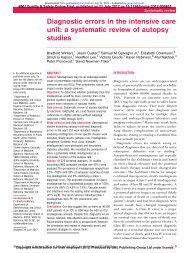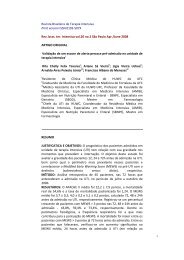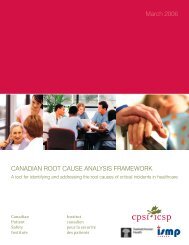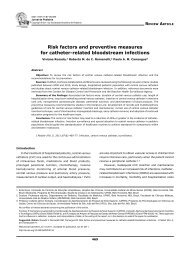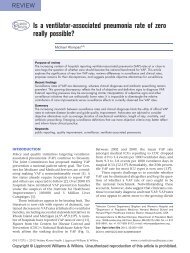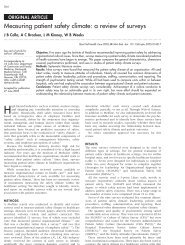Hospital Inpatient Waste Identification Tool
Hospital Inpatient Waste Identification Tool
Hospital Inpatient Waste Identification Tool
You also want an ePaper? Increase the reach of your titles
YUMPU automatically turns print PDFs into web optimized ePapers that Google loves.
3Innovation Series: <strong>Hospital</strong> <strong>Inpatient</strong> <strong>Waste</strong> <strong>Identification</strong> <strong>Tool</strong>the United States, put forth nine national targets for health care overuse to help create moreaffordable care. 4 In the United Kingdom, the Productive Ward Programme, undertaken by the NHSInstitute for Improvement and Innovation, and the NHS Quality, Innovation, Productivity andPrevention (QIPP) activities are examples of efforts to address waste in the delivery of health care.Efforts to reduce waste in the inpatient hospital setting have not progressed in some areas due toinherent conflicts with hospital revenue or failure to recognize the activity as waste. For example,infections that develop during hospitalization have the potential to add revenue under somepayment schemes, although from a population health and resource perspective this represents awaste of resources because these infections are potentially preventable. Due to these complexities,the <strong>Waste</strong> <strong>Identification</strong> <strong>Tool</strong> defines waste without reference to revenue. Obviously, some waste addsto cost, some waste adds to revenue, and some waste both adds to cost and detracts from revenue.Because of this variation in financial environments, how waste impacts the hospital’s bottom linemust be determined on an organization-specific basis.The academic literature reveals relatively little information about the system-wide or societalperspective of hospital waste. IHI conducted an expanded search of non-academic research — whitepapers, statements from national research bodies, and reports from consulting firms in the US andthe UK — to understand hospital waste priorities. The sources of this information included IHI, theNational Quality Forum (NQF), the Agency for Healthcare Research and Quality (AHRQ), and theInstitute of Medicine (IOM) in the US, and the NHS Institute for Innovation and Improvementin the UK, among others. The most commonly cited sources of clinical waste (as opposed toadministrative or operational waste) were the following: adverse events and complications;inappropriate use of clinical services or providers; overuse of clinical services such as diagnosticprocedures, medications, or other treatments; hospital readmissions; lack of care coordination,leading to duplication and rework; unwarranted variation in care when strong scientific evidenceexists; and delays.Based on the literature review and a series of key informant interviews, IHI identified three broadcategories of clinical waste to provide a structure for initial work in this area: adverse events andcomplications, inappropriate use of clinical services or providers, and delays in or lack of carecoordination. In addition, IHI identified specific markers of these categories of waste and ways theymight be identified or reveal themselves on a ward or inpatient unit (e.g., a readmission might be anindicator of either a complication or a lack of care coordination) (see Table 1). Leaders and frontlineclinicians strongly recommended that the <strong>Hospital</strong> <strong>Inpatient</strong> <strong>Waste</strong> <strong>Identification</strong> <strong>Tool</strong> include thepatient and family perspective on unnecessary or unwanted care.© 2011 Institute for Healthcare Improvement



